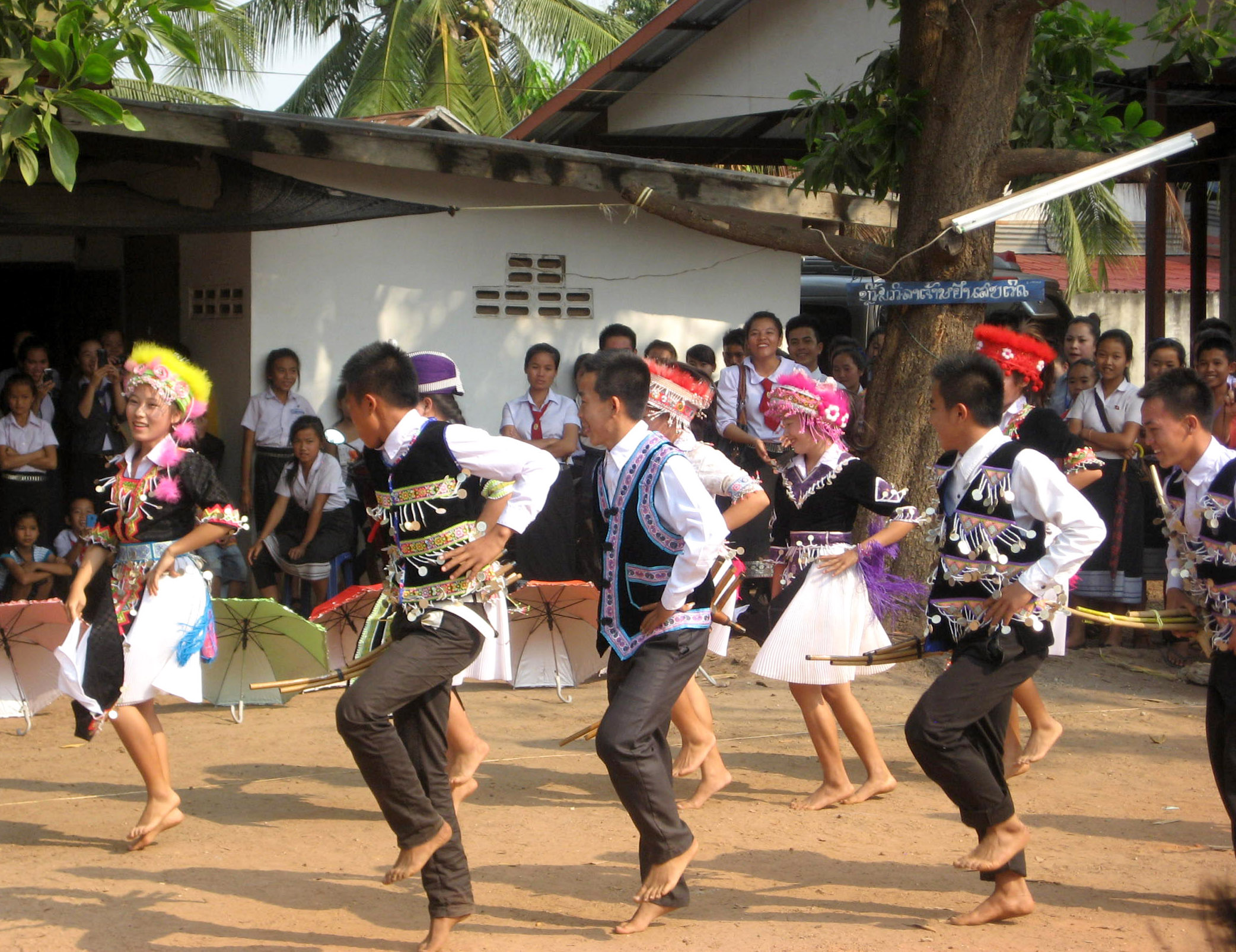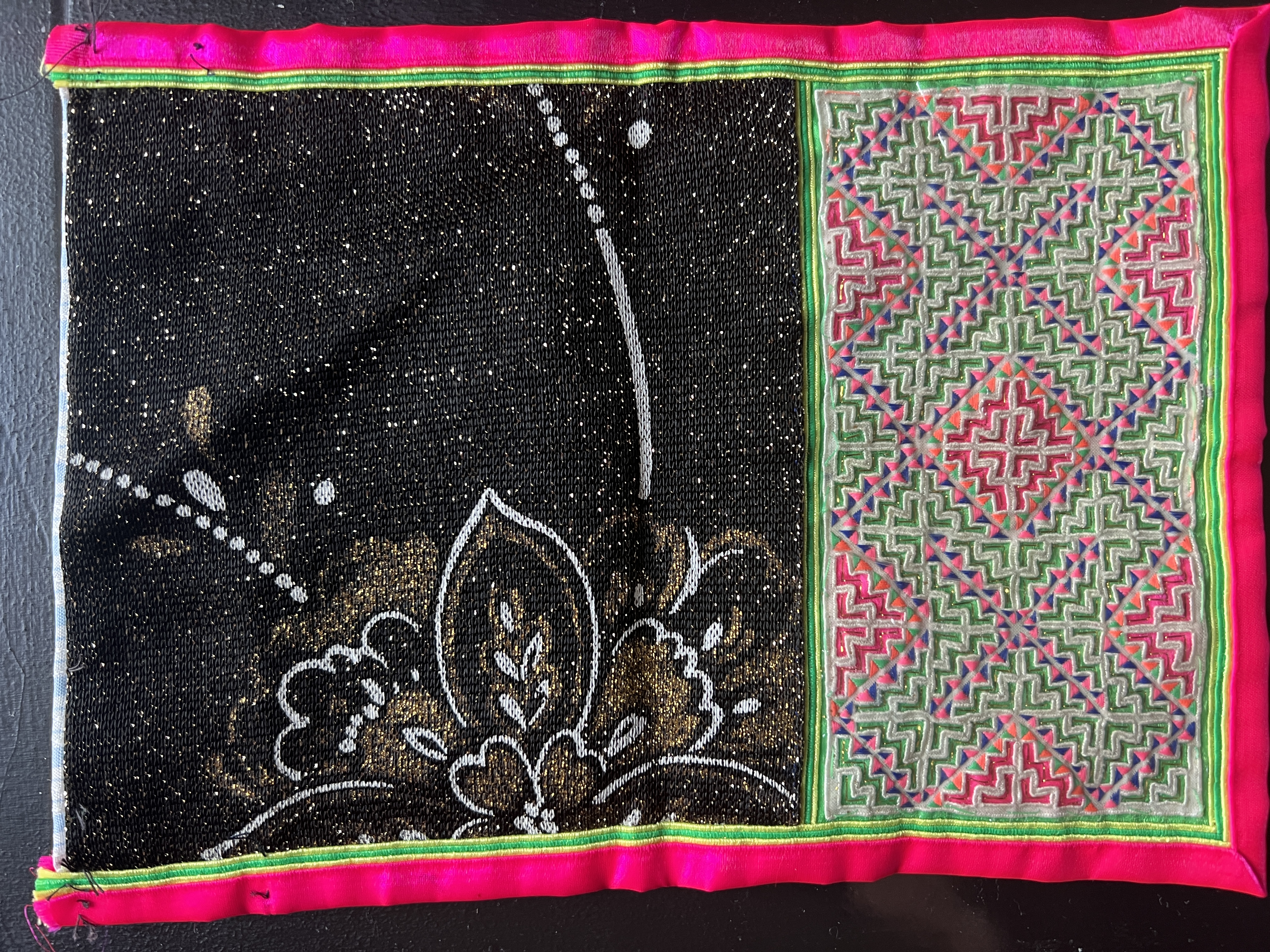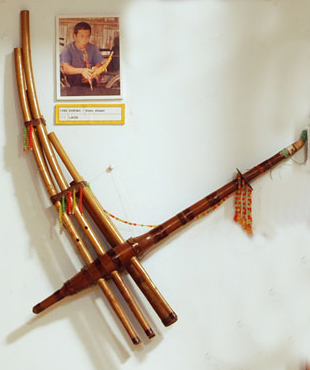|
Hmong
Hmong may refer to: * Hmong people, an ethnic group living mainly in Southwest China, Vietnam, Laos, and Thailand * Hmong cuisine * Hmong customs and culture ** Hmong music ** Hmong textile art * Hmong language, a continuum of closely related tongues/dialects ** Hmong–Mien languages ** Pahawh Hmong, an indigenous semi-syllabic script ** Nyiakeng Puachue Hmong, a modern alphabetic script * Hmong Americans, Americans of Hmong descent See also * Hmong folk religion * Hmong in Wisconsin ** Hmong American Peace Academy * ''Hmong Studies Journal'' * Hong (other) * Miao people The Miao are a group of linguistically-related peoples living in Southern China and Southeast Asia, who are recognized by the government of China as one of the 56 official ethnic groups. The Miao live primarily in southern China's mountains, in ... * Mong (other) {{disambiguation Language and nationality disambiguation pages ... [...More Info...] [...Related Items...] OR: [Wikipedia] [Google] [Baidu] |
Hmong Americans
Hmong Americans (RPA: ''Hmoob Mes Kas'', Pahawh Hmong: "") are Americans of Hmong ancestry. Many Hmong Americans immigrated to the United States as refugees in the late 1970s. Over half of the Hmong population from Laos left the country, or attempted to leave, in 1975, at the culmination of the Laotian Civil War. Thousands of Hmong were evacuated or escaped on their own to Hmong refugee camps in Thailand. About 90% of those who made it to refugee camps in Thailand were ultimately resettled in the United States. The rest, about 8 to 10%, resettled in countries including Canada, France, the Netherlands, and Australia. According to the 2019 American Community Survey by the US Census Bureau, the population count for Hmong Americans was 327,000. Hmong Americans face disparities in healthcare, and socioeconomic challenges that lead to lower health literacy and median life expectancy, and per capita income. History 1976 and 1980 Initially, only 1,000 Hmong people were evacuated ... [...More Info...] [...Related Items...] OR: [Wikipedia] [Google] [Baidu] |
Hmong People
The Hmong people (RPA: ''Hmoob'', Nyiakeng Puachue: , Pahawh Hmong: , ) are a sub-ethnic group of the Miao people who originated from Central China. The modern Hmongs presently reside mainly in Southwest China ( Guizhou, Yunnan, Sichuan, Chongqing, and Guangxi) and countries in Southeast Asia such as Vietnam, Laos, Thailand, and Myanmar. There is also a very large diasporic community in the United States, comprising more than 300,000 Hmong. The Hmong diaspora also has smaller communities in Australia and South America (specifically Argentina and French Guiana, the latter being an overseas region of France). During the First and Second Indo-China Wars, France and the United States intervened in the Lao Civil War by recruiting thousands of Hmong people to fight against forces from North and South Vietnam, which were stationed in Laos in accordance with their mission to support the communist Pathet Lao insurgents. The CIA operation is known as the Secret War ... [...More Info...] [...Related Items...] OR: [Wikipedia] [Google] [Baidu] |
Hmong Language
Hmong / Mong (; RPA: ''Hmoob,'' ; Nyiakeng Puachue: ; Pahawh: , ) is a dialect continuum of the West Hmongic branch of the Hmongic languages spoken by the Hmong people of Sichuan, Yunnan, Guizhou, Guangxi, Hainan, northern Vietnam, Thailand, and Laos. There are some 2.7 million speakers of varieties that are largely mutually intelligible, including over 280,000 Hmong Americans as of 2013. Over half of all Hmong speakers speak the various dialects in China, where the Dananshan (大南山) dialect forms the basis of the standard language. However, Hmong Daw and Mong Leng are widely known only in Laos and the United States; Dananshan is more widely known in the native region of Hmong. Varieties Mong Leng (Moob Leeg) and Hmong Daw (Hmoob Dawb) are part of a dialect cluster known in China as ''Chuanqiandian Miao'', that is, "Sichuan–Guizhou–Yunnan Miao", called the "Chuanqiandian cluster" in English (or "Miao cluster" in other languages) as West Hmongic is also called ''Chua ... [...More Info...] [...Related Items...] OR: [Wikipedia] [Google] [Baidu] |
Hmong Customs And Culture
The Hmong people are an ethnic group currently native to several countries, believed to have come from the Yangtze river basin area in southern China. The Hmong are known in China as the ''Miao'', which encompasses not only Hmong, but also other related groups such as Hmu, Qo Xiong and A-Hmao. There is debate about usage of this term, especially amongst Hmong living in the West, as it is believed by some to be derogatory, although Hmong living in China still call themselves by this name. Throughout recorded history, the Hmong have remained identifiable as Hmong because they have maintained the Hmong language, customs, and ways of life while adopting the ways of the country in which they live. In the 1960s and 1970s, many Hmong were secretly recruited by the American CIA to fight against communism during the Vietnam War. After American armed forces pulled out of Vietnam, a communist regime took over in Laos and ordered the prosecution and re-education of all those who had fought ... [...More Info...] [...Related Items...] OR: [Wikipedia] [Google] [Baidu] |
Hmong In Wisconsin
Hmong Americans are the largest Asian ethnic group in the U.S. state of Wisconsin.Asian Americans in Wisconsin " Wisconsin Department of Health Services. Retrieved on March 1, 2014. Allies of the United States in Southeast Asia during the Vietnam War and later stages of the , they started seeking asylum as political refugees after the communist takeover in both nations in 1975. Hmong in Vietnam and Laos were subjected to targeted attacks in both countries, and tens of thousands were killed, imprisoned or ... [...More Info...] [...Related Items...] OR: [Wikipedia] [Google] [Baidu] |
Pahawh Hmong
Pahawh Hmong ( RPA: Phaj hauj Hmoob , Pahawh: ; known also as ''Ntawv Pahawh, Ntawv Keeb, Ntawv Caub Fab, Ntawv Soob Lwj'') is an indigenous semi-syllabic script, invented in 1959 by Shong Lue Yang, to write two Hmong languages, Hmong Daw ''(Hmoob Dawb'' White Miao) and Hmong Njua AKA Hmong Leng ''(Moob Leeg'' Green Miao). Terminology The term ''Phaj hauj'' means "to unite," "to resist division," or "to have peace" in Hmong. Form Pahawh is written from left to right. Each syllable is written with two letters, an onset ''(la,'' an initial consonant or consonant cluster) and a rime ''(yu,'' a vowel, diphthong, or vowel plus final consonant). However, the order of these elements is rime-initial, the opposite of their spoken order. (That is, each syllable would seem to be written right to left, if it were transcribed literally into the Roman alphabet.) This is an indication that Shong conceived of the rimes as primary; Pahawh Hmong might therefore be thought of as a vowel-c ... [...More Info...] [...Related Items...] OR: [Wikipedia] [Google] [Baidu] |
Miao People
The Miao are a group of linguistically-related peoples living in Southern China and Southeast Asia, who are recognized by the government of China as one of the 56 official ethnic groups. The Miao live primarily in southern China's mountains, in the provinces of Guizhou, Yunnan, Sichuan, Hubei, Hunan, Guangxi, Guangdong, and Hainan. Some sub-groups of the Miao, most notably the Hmong people, have migrated out of China into Southeast Asia (Myanmar, Northern Vietnam, Laos, and Thailand). Following the communist takeover of Laos in 1975, a large group of Hmong refugees resettled in several Western nations, mainly in the United States, France, and Australia. Miao is a Chinese term, while the component groups of people have their own autonyms, such as (with some variant spellings) Hmong, Hmu, Xong (Qo-Xiong), and A-Hmao. These people (except those in Hainan) speak Hmongic languages, a subfamily of the Hmong–Mien languages including many mutually unintelligible languages such ... [...More Info...] [...Related Items...] OR: [Wikipedia] [Google] [Baidu] |
Hmong Textile Art
Hmong Textile Art consists of traditional and modern textile arts and crafts produced by the Hmong people. Traditional Hmong textile examples include hand-spun hemp cloth production, basket weaving, batik dyeing, and a unique form of embroidery known as ''flower cloth'' or Paj Ntaub in the Hmong language Romanized Popular Alphabet, RPA. The most widely recognized modern style of Hmong textile art is a form of embroidery derived from Paj Ntaub known as ''story cloth.'' Traditional Hmong textiles like Paj Ntaub play a significant role in Hmong daily life and are often directly associated with larger cultural concerns such as religion, gender, economics, and ethnic identity. Modern textiles like story cloths provide important historical and cultural context and are often used by scholars and educators within and outside of the Hmong community as a means to understand and engage with Hmong culture. Traditional Textiles Hemp Cloth Most traditional forms of Hmong textiles were orig ... [...More Info...] [...Related Items...] OR: [Wikipedia] [Google] [Baidu] |
Hmong Music
Hmong music is an important part of the culture of the Hmong people, an ethnic group from southeast Asia. Because the Hmong language is tonal, there is a close connection between Hmong music and the spoken language. Music is an important part of Hmong life, played for entertainment, for welcoming guests, and at weddings and funerals. Hmong musical instruments includes flutes such as the dra, leaves also called , 2-string violin (xim zaus in Hmong), and the or , a type of mouth organ. History The Hmong people trace their origin to the Yellow River region of China around 2700 B.C. In the 16th century Hmong leaders formed a kingdom in the central Chinese provinces of Hunan, Hubei, and Henan. This kingdom existed for several centuries before being defeated by the Chinese government. Surviving Hmong led to the mountains of Guizhou, Yunnan and Sichuan, where many Hmong still live today. In Hmong folktales and songs, this ancient Hmong kingdom is celebrated as a golden age. Acco ... [...More Info...] [...Related Items...] OR: [Wikipedia] [Google] [Baidu] |
Hmong Cuisine
Hmong cuisine is the cuisine of the Hmong people of China, Southeast Asia and the Hmong American community in the United States. The vast majority of dishes that make up the Hmong cuisine are not actually unique to Hmong communities but rather blends of culinary dishes found in hosting states of Hmong migration. While remaining stateless after their expulsion by the Han clan of Ancient China, the Hmong have adopted staple dishes from various cuisines during their migration as their own, such as dishes of the Lao, Thai, Vietnamese and Chinese cuisines. Overview Hmong cuisine varies somewhat by region. For example, in Hmong communities in the United States, a Hmong dish may be largely based on a dish of a larger Asian ethnicity that also resides in the local community, such as the Chinese, Lao, Vietnamese, or Thai. As many ethnic Hmong have passed through Laos & Thailand en route to their final destinations around the world and many still reside there, Lao cuisine has influence ... [...More Info...] [...Related Items...] OR: [Wikipedia] [Google] [Baidu] |
Hmong Folk Religion
Kev Dab Kev Qhuas (Hmong folk spirituality or Miao folk spirituality) is the common ethnic religion of Miao peoples, best translated as the practice of spirituality.Lee, Tapp, 2010. p. 36 The religion is also called Hmongism by a Hmong American church established in 2012 to organize it among Hmong people in the United States.Bylaws of the Temple of Hmongism Hmongism.org: published March 3, 2013 This practice has a blend of theology,Tapp, 1989. p. 59 the respect between people and natural land spirits, and the understanding of the spirituality that are understood by Miao peoples. Although most Hmong people are able to continue to practic ... [...More Info...] [...Related Items...] OR: [Wikipedia] [Google] [Baidu] |
Hmong–Mien Languages
The Hmong–Mien languages (also known as Miao–Yao and rarely as Yangtzean) are a highly tonal language family of southern China and northern Southeast Asia. They are spoken in mountainous areas of southern China, including Guizhou, Hunan, Yunnan, Sichuan, Guangxi, and Hubei provinces; the speakers of these languages are predominantly "hill people", in contrast to the neighboring Han Chinese, who have settled the more fertile river valleys. Relationships Hmong (Miao) and Mien (Yao) are closely related, but clearly distinct. For internal classifications, see Hmongic languages and Mienic languages. The largest differences are due to divergent developments in their phonological systems. The Hmongic languages appear to have kept the large set of initial consonants featured in the protolanguage but greatly reduced the distinctions in the syllable finals, in particular losing all glides and stop codas. The Mienic languages, on the other hand, have largely preserved syllable fina ... [...More Info...] [...Related Items...] OR: [Wikipedia] [Google] [Baidu] |






